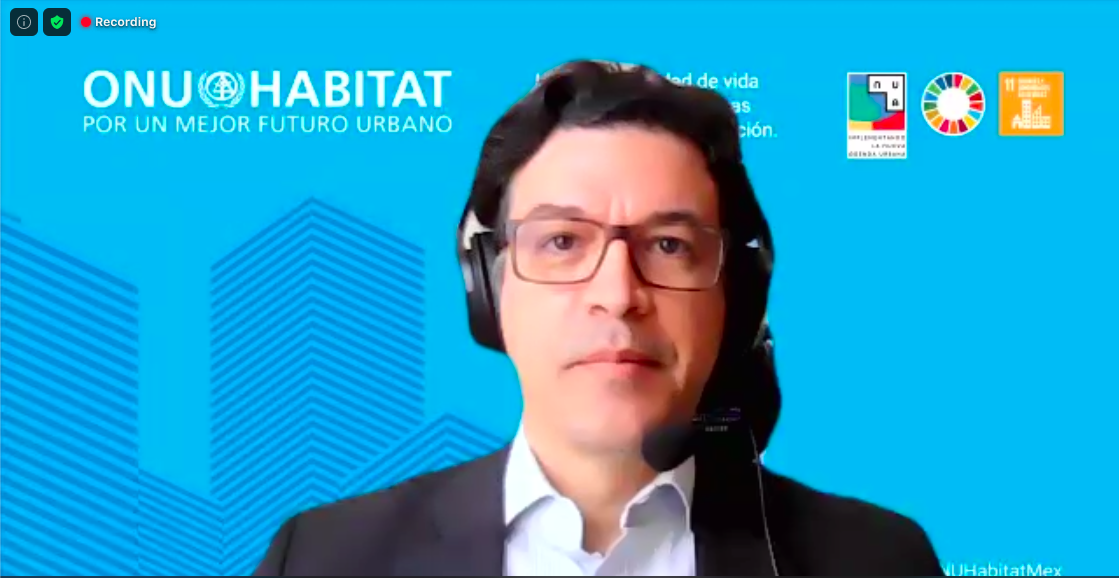Bogota, 18 March 2021 - The first webinar of a series dubbed “Joint Roadmap Conversation” was held in Bogota early this week. The event - organized jointly by UN-Habitat and the Mayor's Office of the city of Bogotá - initiated a series of three virtual talks that will be held to share experiences and international success stories regarding fundamental transformative dimensions for cities of the present and the future, in line with the approaches of the New Urban Agenda of the United Nations.
The Mayor of Bogotá, Mrs. Claudia López opened the meeting and spoke about the Green Corridor Project, an initiative that aims to intervene on Carrera Septima - one of the most iconic avenues in the city of Bogotá and expected to positively impact the quality of life of all citizens. The Mayor stressed the importance that this development shall take place within the standard proposed in The New Urban Agenda.
Elkin Velázquez - UN-Habitat’s regional director for Latin America and the Caribbean - highlighted the relevance of having these technical conversations at the local level, to show that in practice, progress can be made with innovation, political commitment and method. Likewise, Velázquez framed his speech with a message of hope for Bogotá and the entire region urging to advance actions at all levels adapting effective urban solutions to the different contexts that we live in today.
Eduardo López, Director of Research and Capacities at UN Habitat’s headquarters in Nairobi, spoke about the importance of rethinking societal interactions and highlighted the need to achieve a revolution of empathy, which restores the sense of place that has been lost.
After these introductions, Diego Sánchez - director of the IDU - presented the Bogota’ Green Corridor Project. During this presentation he highlighted the main aspects of the Green Corridor of Carrera Séptima, which is designed to contribute to environmental harmony, improve sustainable mobility, and strengthen a sense of belonging in a quality urban space.

The first international case was presented by architect Emilio Martínez Vidal, who discussed the challenges faced by the city of Madrid in carrying out the Madrid Rio Project. The latter was an urban renewal project converting the zone alongside the Manzanares River into green areas to make the city greener and more livable.
The second case concerned the renovation of Oxford Street, the iconic London road. The project was explained by the renowned urban planner Elad Eseinstein, who focused his 20-minute presentation on demonstrating the importance of tackling this type of project based on the definition of scales. Eseinstein also took the opportunity to carry out an interesting prospective exercise of these scales in a post-Covid19 context.
Finally, Cristina Calderón Olea, director of the San Francisco Market Street Project, spoke about how planners approached the project of making the most important avenue of San Francisco a pedestrian area. Calderón pointed out the importance of citizen co-creation in such a project, as fundamental for planners to understand all the key issues and co-create solutions.
The event concluded with insightful lessons that the city of Bogotá will be able to incorporate going forward. Additionally, the invitation is now open for all interested parties to attend the second discussion that will take place this April on the topic of Urban and Territorial Plans for city transformation.